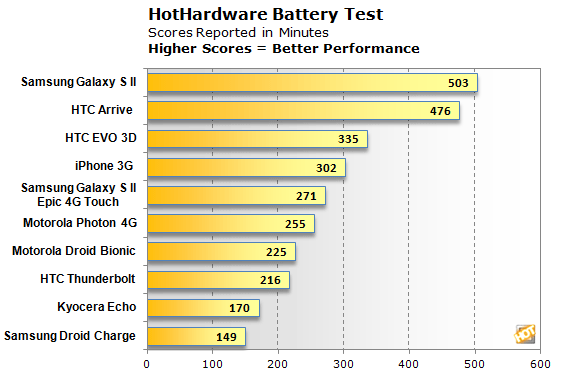Droid Bionic by Motorola Review
Performance
During our tests, the Droid Bionic was very responsive and provided the performance we would expect from a phone with a dual-core 1GHz processor and 1GB of RAM. The phone's 4.3-inch qHD screen is comparable to other qHD displays we've seen on other phones. Although the Droid Bionic's screen isn't quite as vibrant as the Super AMOLED plus displays we've seen from Sansung, we really have no complaints.
Since the Droid Bionic is the first smartphone from Verizon Wireless to offer 4G LTE connectivity in combination with a dual-core 1GHz processor and 1GB of RAM, this phone is at the top end of Verizon Wireless' lineup. If you're fortunate enough to live in a 4G LTE coverage area, you should notice an increase in surfing speeds. Of course, we'll run some quantitative tests on the phone to verify these speeds in the coming pages.
Images captured using the Droid Bionic's 8MP camera were hit and miss. Some of our images turned out well but many others were grainy or slightly off in color. Capturing excellent indoor shots using any phone-based camera is often difficult but the Droid Bionic seemed to have a harder time than other phones in this area. Out of five indoor shots using the phone's flash and a child's train set as our subject, only one was clear and properly lit.
Click to enlarge
As with many other smartphones today, the Droid Bionic's display is slightly difficult to view under direct sunlight, though the Droid Bionic is no worse than other phones we've seen. Viewing angles on the Droid Bionic's display are excellent.
Motorola and Verizon Wireless say users can expect up to 650 minutes of talk time (about 10.83 hours) and up to 200 hours (about 8.33 days) of standby time from the Droid Bionic's 1735 mAh battery. In our everyday usage of the phone—checking email, surfing the web, etc—we found the battery to be adequate for a light to moderate day of use. Of course, if you use the phone as a hotspot, stream lots of music, or use other draining features, you'll probably want to have a spare battery or a power outlet nearby.
In an attempt to put a quantitative measure on the Droid Bionic's battery life, we set up our own Web-surfing test. In this test, we set up a webpage with a mix of graphics and text. The page automatically refreshed itself every three minutes. We set the Droid Bionic's display to 50% brightness and turned off Wi-Fi. When we ran this, the Droid Bionic lasted for about three hours and 45 minutes before giving up. Compared to the HTC Thunderbolt, another high-end phone from Verizon Wireless, the Droid Bionic lasted nine minutes longer. Both of the battery tests were run on a 3G connection.















